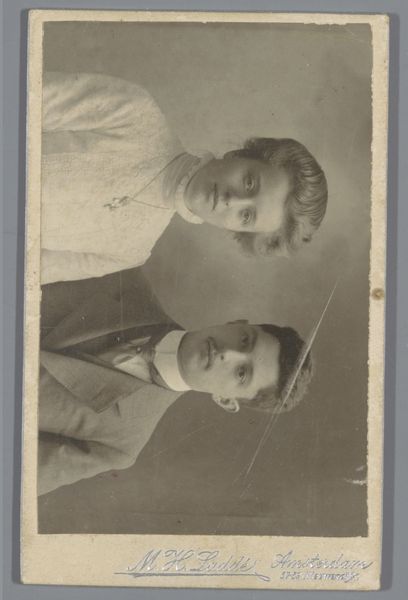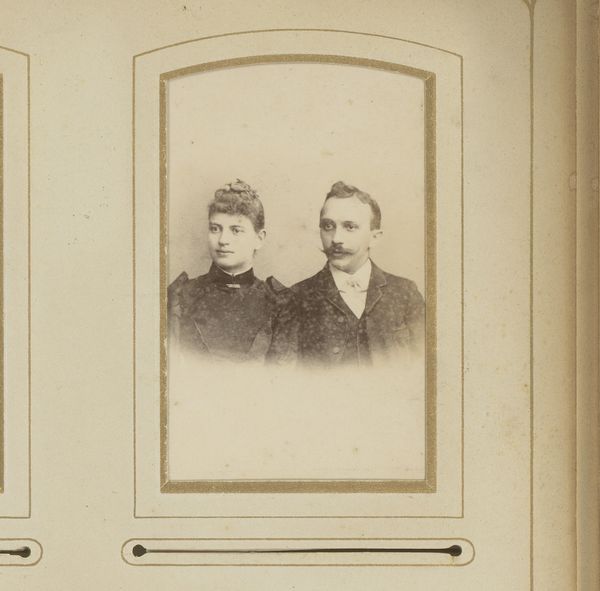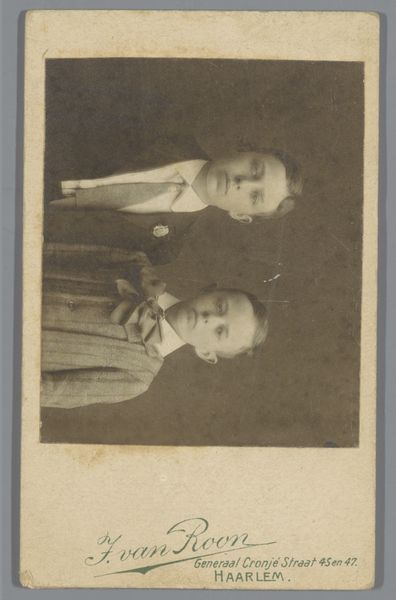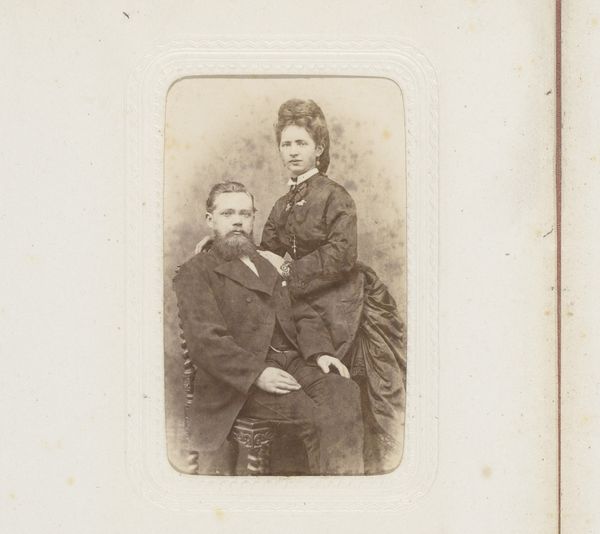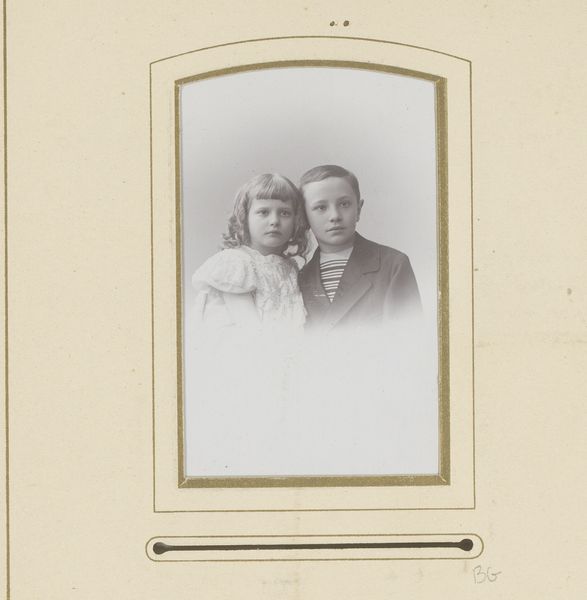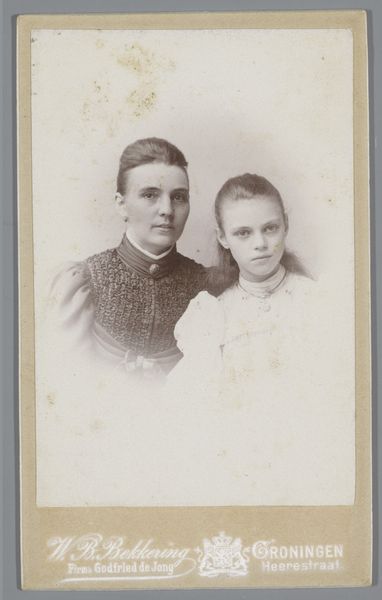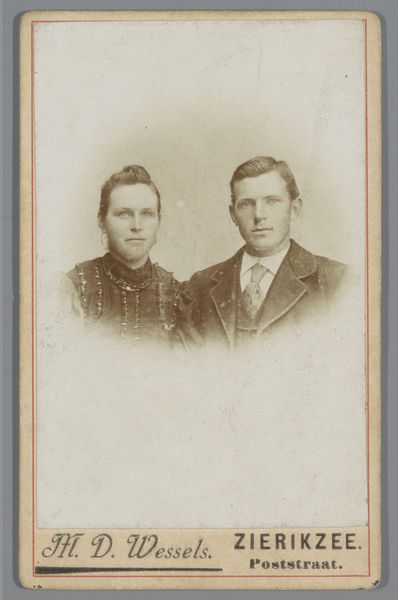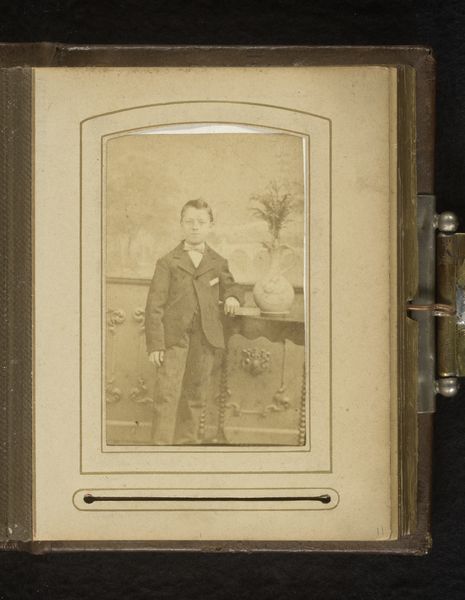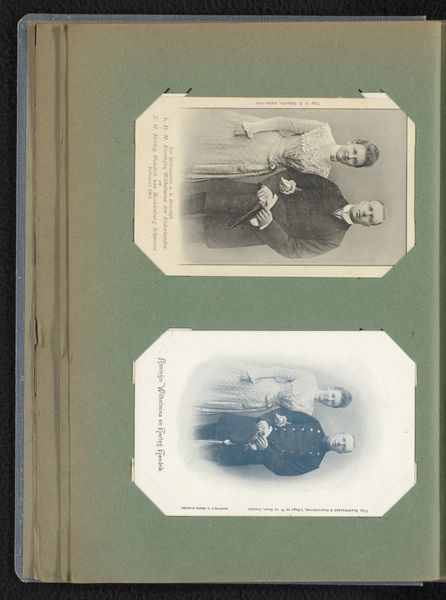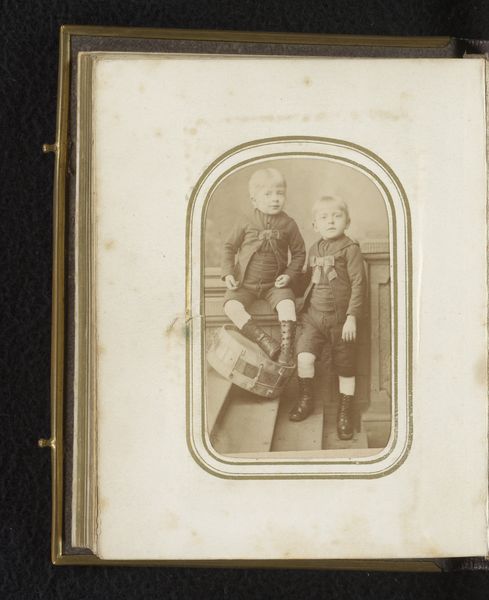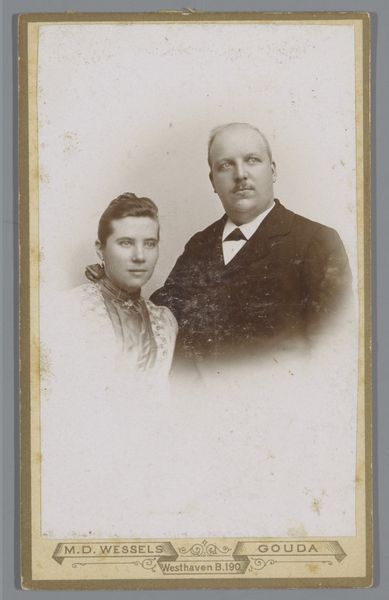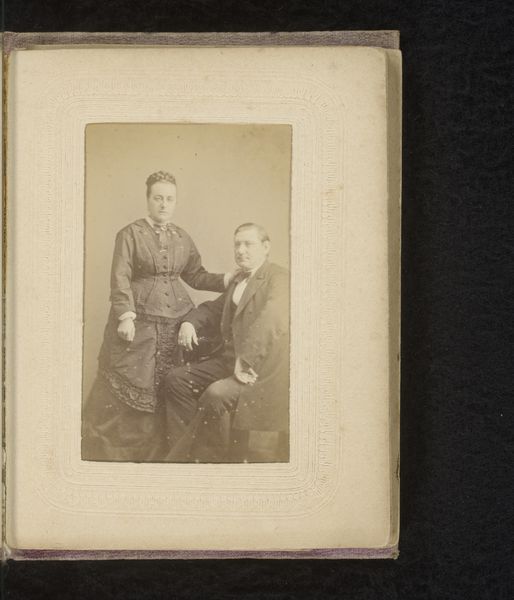
photography, gelatin-silver-print
#
portrait
#
self-portrait
#
photography
#
coloured pencil
#
group-portraits
#
gelatin-silver-print
#
realism
Dimensions: height 105 mm, width 65 mm
Copyright: Rijks Museum: Open Domain
Curator: Before us is "Portret van een onbekende man en een onbekende jongen", a gelatin-silver print made sometime between 1893 and 1916 by Jacob Niestadt. Editor: The starkness is what hits me first. The way the two figures are positioned, one above the other... almost feels like they're floating, or perhaps, being pinned under some kind of pressure. Curator: It's interesting that you pick up on pressure. Group portraits, especially father-son images like this one, often served to solidify societal norms of patriarchy. This visual structure, consciously or unconsciously, replicates those power dynamics. Editor: Yes, visually there is a hierarchy present between the two. Though it is subtle it does not seem very traditional; there is something strange in the positioning, the angle is almost as if the photographer or the people fell on the side. Curator: What speaks to that “strange” element for you? Editor: Well, looking at them now, there is no familiar pose between father and son: it might be a representation of the distance that sometimes appears between families or, a need to find an unposed photo, more realistic to the every-day. The photograph lacks the warmth I'd expect to see represented here. Curator: I appreciate you bringing that point up. We're seeing a specific class position reflected here. Restrained emotion can be argued to reflect the male emotional codes that became entrenched in the middle class in that period. Thinkers even spoke about a type of 'affective capital' that men carried in such class positions. Editor: So the apparent emotional distance is perhaps performative to a degree, designed to uphold these codes? That makes me reconsider my initial sense of pressure - perhaps it's the pressure of societal expectation manifesting in the portrait. Still, even with context, the gaze of that boy feels heavy. What emotional weight do you see carried in the symbol of "the son" itself? Curator: Historically, it has carried the hopes and the sins, and often becomes a proxy for future prosperity. Thinking about our current cultural moment and the weight on young shoulders navigating intersecting crises of climate and political precarity, it feels particularly resonant now. Thank you for sharing your perspective. Editor: It’s true that images take new shape in the present, even when tethered to the past. These echoes that reverberate through time are worth thinking through deeply.
Comments
No comments
Be the first to comment and join the conversation on the ultimate creative platform.
